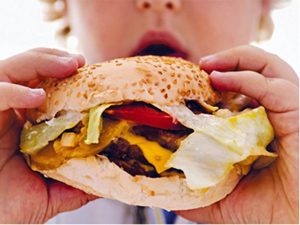 Arlene explores problems with cholesterol, G6PD deficiency, Type 2 Diabetes, as well as the relationship between polycystic ovaries and the difficulty in losing weight.
Arlene explores problems with cholesterol, G6PD deficiency, Type 2 Diabetes, as well as the relationship between polycystic ovaries and the difficulty in losing weight.
Should I be worried about my cholesterol test? My results are cholesterol 7.9, triglycerides .7, HDL 2.63, LDL 4.9, but the chol/HDL ratio is only 3? My doctor is champing at the bit to put me on statins but I don’t know anybody who hasn’t had tiredness and muscle aches so I refuse to use them and I believe that the ratio is a better way to predict CDV?
Your bad cholesterol is too high and you should attempt to lower it. The action taken depends on whether you have a family history of heart disease. Another step I would take is a Heart scan, also known as a coronary calcium scan. These provide pictures of your heart’s arteries (coronary arteries). Doctors use heart scans to look for calcium deposits in the coronary arteries that can narrow your arteries and increase your heart attack risk. Depending on all these factors would determine the action necessary.
I would try to bring down your LDL by changes in your lifestyle initially – both diet and exercise. If this has no impact on your cholesterol then I would suggest drugs. With statin is being hailed as the “drug of the century”, doctors are quick to diagnose them. Although statins are the most popular cholesterol-lowering drugs, there are other options. Many of these are used alone or in conjunction with statins. If medication combined with lifestyle changes doesn’t enable you to reach your LDL goal within three months, your doctor may consider starting you on a second drug to boost results. Combination therapy can help reverse or slow the advance of atherosclerosis and further decrease your risk of a heart attack or death. Also, since both drugs may be prescribed in lower doses than if you were taking either alone, your risk of side effects may decrease.
How is G6PD deficiency diagnosed?
G6PD can be diagnosed by a blood test. It is hereditary so if one male in the family has it, the other males should be tested. G6PD deficiency is an inherited condition in which the body doesn’t have enough of the enzyme glucose-6-phosphate dehydrogenase, or G6PD, which helps red blood cells (RBCs) function normally. This deficiency can cause haemolytic anaemia, usually after exposure to certain medications, foods, or even infections.
Most people with G6PD deficiency don’t have any symptoms, while others develop symptoms of anaemia only after RBCs have been destroyed, a condition called haemolysis. In these cases, the symptoms disappear once the cause, or trigger is removed. In rare cases, G6PD deficiency leads to chronic anaemia. Consequently, if a person suffers from chronic anaemia they should be tested for G6PD.
With the right precautions, a person with G6PD deficiency can lead a healthy and active life.
 I have Polycystic ovaries and am struggling to lose weight. Can you explain and help please?
I have Polycystic ovaries and am struggling to lose weight. Can you explain and help please?
PCOS is a syndrome, not a disease, which means that there are a collection of symptoms that can manifest themselves. Difficulty in losing weight is one, and it is essential to try and maintain a good lifestyle to prevent the other symptoms from manifesting. One of the more common symptoms is insulin resistance. Another is sex hormone imbalances (excess testosterone, reversed levels of FSH and LH). Both of these things can cause weight issues, for different reasons, having both physical and psychological effects on appetite and blood sugar. You have to be fully committed to losing weight and it is a good idea to go and see a dietitian who specialises in this area. Often it is the psychological barrier to losing weight, despite the hormonal imbalances which don’t help – and this is why you need the guidance of a professional who can help you with guidelines and monitor your progress. Your body is so complex and you have to learn how to make healthier lifestyle choices..
If you do have insulin resistance or full-blown diabetes, your doctor will have informed you. He might have put you on medication and you should be on a low-GI diet. It is mainly avoiding simple carbohydrates like white sugar, bread, pasta and rice, being careful not to eat processed products like biscuits cakes, chocolates and lollies. Portion sizes of all the foods you eat must be watched. Exercise is essential and should be done daily – preferably about an hour.
You should find that generally, your symptoms from polycystic ovaries improve with weight loss.
Pregnancy might occur without medical intervention – you should discuss this with your doctor. Women with Polycystic Ovarian Syndrome often do not menstruate regularly, but with weight loss, this often changes. Some women get put on birth control pills to regulate their menstrual cycle.
Losing weight really lessens the symptoms of PCOS. Many women are able to get pregnant without medical intervention after losing weight. Weight loss often regulates insulin resistance and hormone imbalance.
What effects can Type 2 diabetes have on the body?
People with Type 1 or Type 2 diabetes are at a much higher risk than the general population for damage to the eyes, kidneys, nerves, and blood vessels. Because of these serious risk factors, it is recommended to have regular screening for early signs of damage. Many of these side effects can be delayed or avoided altogether through careful blood sugar control. In addition, a recent study has found that lowering blood sugar levels also lower treatment costs for people with Type 2 diabetes.
Eye Damage
Diabetic eye disease starts when blood vessels in the back of the eye (the retina) balloon out into pouches. Although this stage — called non-proliferative retinopathy — generally does not affect vision, it can progress to a more serious form called proliferative retinopathy. This occurs when damaged blood vessels close off and new, weaker vessels take their place. These new vessels can leak blood, which blocks vision. They can also cause scar tissue to grow and distort the retina.
Because the retina can be irreversibly damaged before you notice any change in vision, and because retinopathy can be effectively treated with lasers to minimize vision loss, the Diabetes Association recommends screening for retinopathy yearly.
Kidney Disease
Kidney disease starts when the blood vessels in the kidney become leaky. These leaky vessels allow protein from the blood to be excreted with urine. (It’s this protein that doctors detect when they test for kidney function.) Eventually, some vessels collapse and place more pressure on those that remain. Under this increased load, the remaining blood vessels are also damaged and the kidney may fail. If the disease progresses to this point, a person may have to go on dialysis — where a machine performs the role of the kidney — or receive a kidney transplant.
Because of the serious consequences of kidney disease, the Diabetes Association recommends screening for protein in the urine every year starting at the time of diagnosis, or five years after the diagnosis in Type 2 diabetics.
Heart and Blood Vessel Disease
High blood sugar damages blood vessels and can lead to blockage. In the heart, this blockage can cause heart attacks. In fact, people with diabetes have two to four times the risk of developing heart disease or stroke than the general population. Blocked vessels in the legs can cause pain and can also impair circulation. With poor circulation, small cuts or infections are less likely to heal. Eventually, 0.6 per cent of all diabetics have lower-limb amputations because of damage to the feet or lower legs
Nerve Disease
In diabetes, the nerves that become damaged are the ones that allow you to sense temperature, pressure, texture, or pain on your skin. In most people with diabetes, nerve disease (neuropathy) affects the feet and lower legs, causing numbness or tingling. The real problem arises when numbness allows injuries to the foot to go unnoticed. For this reason, the Diabetes Association recommends that all people with diabetes have a thorough foot exam every year.
 I have been carrying the last 3kg I want to lose, for 4 years now. I have tried every diet or eating plan you could think of. The weight is around my stomach. The rest of me is fine. I walk nearly every day, I eat well but this weight will not budge. All I want is a flat stomach. I also do 100 sit-ups every second night before I go to bed.
I have been carrying the last 3kg I want to lose, for 4 years now. I have tried every diet or eating plan you could think of. The weight is around my stomach. The rest of me is fine. I walk nearly every day, I eat well but this weight will not budge. All I want is a flat stomach. I also do 100 sit-ups every second night before I go to bed.
It is necessary to reassess the quantities you are consuming. Losing weight is an equation of how many calories you eat, and the number your body uses as energy. Your intake may be well balanced but your portion sizes may be too large. Perhaps you should increase the intensity or duration of your exercise routine. Genetically you may be predisposed to carry your excess weight abdominally, so when you lose this 3 kg your stomach will be “flatter”.
I have been dieting on/off for 10 years (I am 31) as a result I think my metabolic rate is very slow despite the fact I do exercise. How can I verify this is the case? How can I rectify it?
Yoyo dieting can result in it becoming more difficult to lose weight, however, this is not irreversible. You must start eating consistently and get off the dieting merry-go-round. Eating six small meals a day and exercising regularly will result in you losing weight. You might want to consult your doctor to investigate whether you have anything metabolically wrong (e.g. Thyroid under active, iron deficiency). Forget the word “diet”, and start accepting that eating everything is normal, provided your portion sizes remain small. Exercise speeds up the metabolic rate, and it doesn’t stop when you cease moving. Daily exercise and careful eating will remove those excess kilos!!
I am always trying to lose weight and have just read a book on food combining. What do you think of this diet? I am so desperate to “shrink” that I will try anything. I don’t understand it, but they give menus that I can follow. Can you explain how it works and if you think it is healthy or not?
The concept behind food combining diets is that proteins require acids to digest and carbohydrates require alkali, so mixing the two creates incorrect digestion – and one of the consequences is obesity. Should you subscribe to this diet, you can say goodbye to toasted cheese sandwiches, meat and potatoes, lamb curry and rice and spaghetti bolognaise. The notion that starch foods need an alkaline solution while protein needs an acid one is rubbish. The stomach is an acid environment and has a pH of 1; so all foods entering the stomach experience this intense acid. In addition, there is hardly a single food that is a pure protein or pure carbohydrate. Most foods, whether they classify them as carbohydrates, proteins or fats, are a combination. Bread, all grains and cereal foods, legumes, nuts and milk contain protein and carbohydrates within the same food. This diet is not at all recommended; it carries a high risk of you becoming nutrient deficient. We should be combining foods rather than separating them. The body is perfectly equipped to cope with such mixtures. In addition, if you are participating in sport, it may provide insufficient energy.

